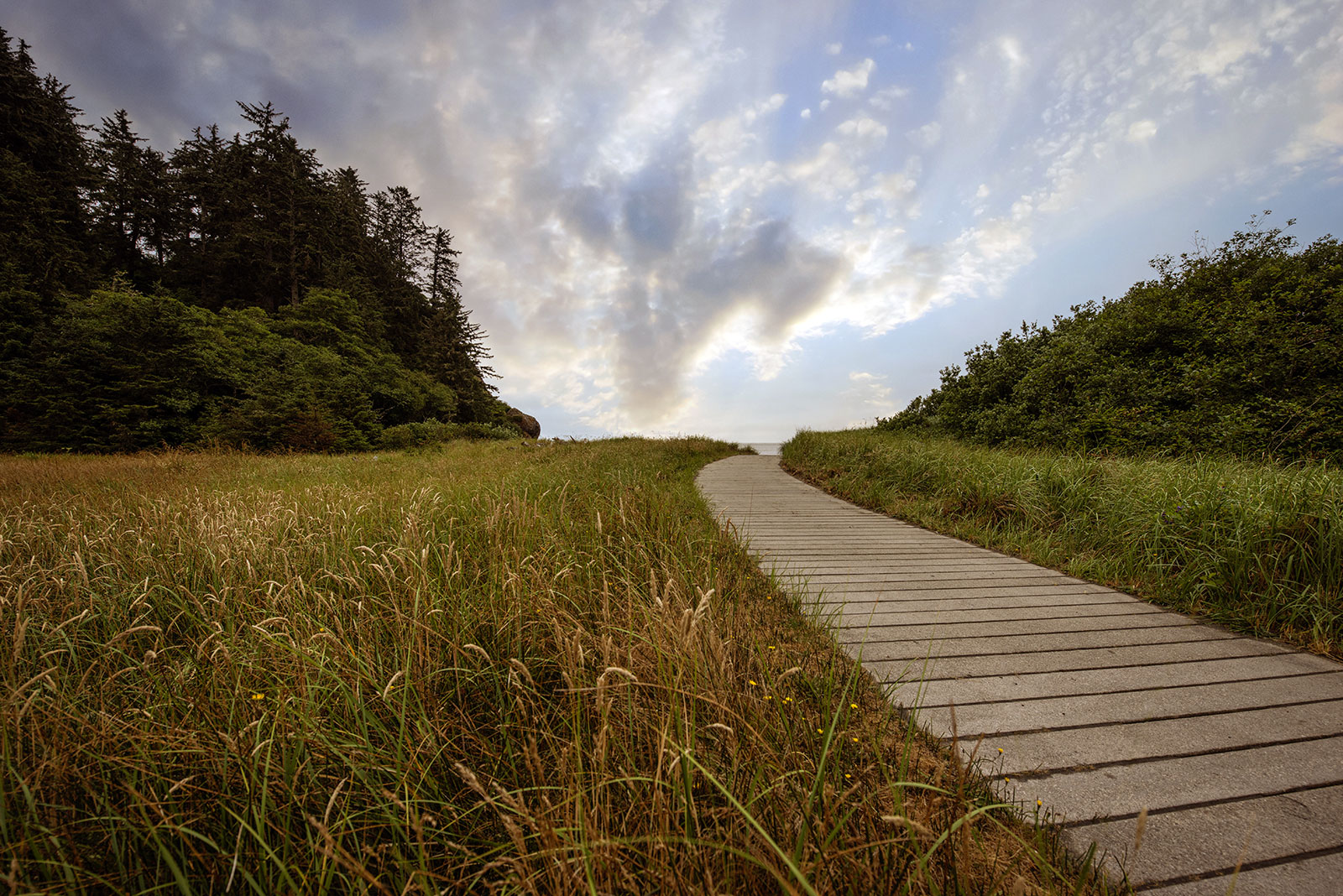
A Confluence of Peregrinations and Prayers
At Cape Disappointment near the mouth of the Columbia River, Maya Lin’s walkway and boardwalk present juxtaposing journeys of discovery.
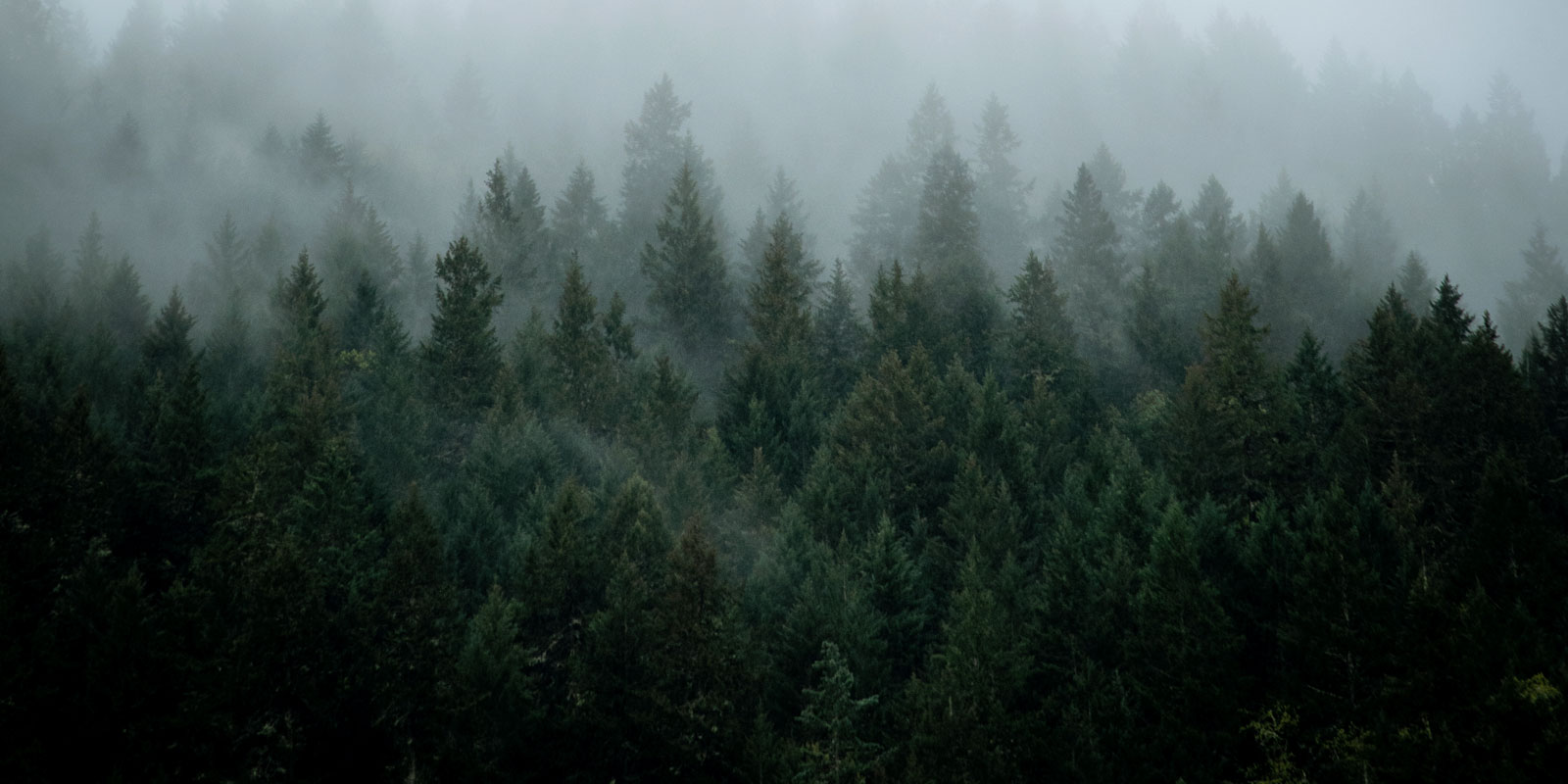
A legend found in their cones provides lessons in shelter and community.
BY LAURA J. COLE | December 14, 2023
There is a story popular in northwest folklore about the cones of the Douglas-fir tree.
It goes something like this: A fire had broken out in the forest and a mouse was trying to escape, only to realize it could not outrun the flames. Looking to find shelter that would provide protection until the fire passed, the mouse turned to the trees. It asked the western hemlock for help, but the tree turned it away. It asked the bigleaf maple, and it, too, turned the mouse away. Finally, the mouse came across the Douglas-fir. The tree—among the largest in the world—invited the mouse to take shelter amid its high canopy and thick bark, where the mouse scrambled into one of the tree’s cones, leaving its tail and hind legs dangling out the end like a child’s during hide-and-seek.
That legend became a way to identify the Douglas-fir. The three prongs emerging from the cones’ scales is a signature of the evergreen that was named Oregon’s official state tree in the 1930s and remains one of the most abundant and ubiquitous trees in the region, according to Cascadia Field Guide. The species continues to provide shelter for mice as well as shrews, porcupines, red tree voles, and nesting western spotted owls.
The tree—among the largest in the world—invited the mouse to take shelter amid its high canopy and thick bark, where the mouse scrambled into one of the tree’s cones.
Since moving to Oregon, I have wanted to be able to look out at a stand of trees and know from a glance which were Douglas-fir and western hemlock and Sitka spruce. After watching several videos and reading a slew of articles, I still wasn’t able to tell—other than by the cones, and even then I second-guessed myself. I thought walking among a grove of them would solidify in my mind what they looked like, and after searching online I found the Friends of Douglas-Fir National Monument’s website. It proposes to preserve the species in a section of Willamette National Forest—much like Joshua trees, sequoias, and redwoods are elsewhere. I opted for one of the hikes they recommend and convinced my partner, John, to come with me.
On Thanksgiving Day, we drove out to Hackleman Old-Growth Trail, which includes some trees that are more than 500 years old and well over 300 feet tall. We looked up at some of the tallest until our necks ached and we grew dizzy. The ground around us was speckled with the telltale cones, but as I looked from the oldest trees to the youngest, I still couldn’t distinguish one species from the other. I have read that the needles are flat and protrude from all sides, the cones hang down instead of standing upright, and the branches grow in rings, so that each level is clearly delineated. On some trees, the branches extend near to the ground and in others, only in the upper reaches.
After finishing the mile-long trail, I felt no clearer in my identification skills, and decided to go to the annual Portland Tree Lighting Ceremony the next day. The Christmas tree in Pioneer Courthouse Square is a Douglas-fir. Because it grows rapidly and can replace itself faster than many other species, it is among the most common purchased for Christmas trees.
That outing proved even less fruitful than the one to Hackleman—and more unsettling.
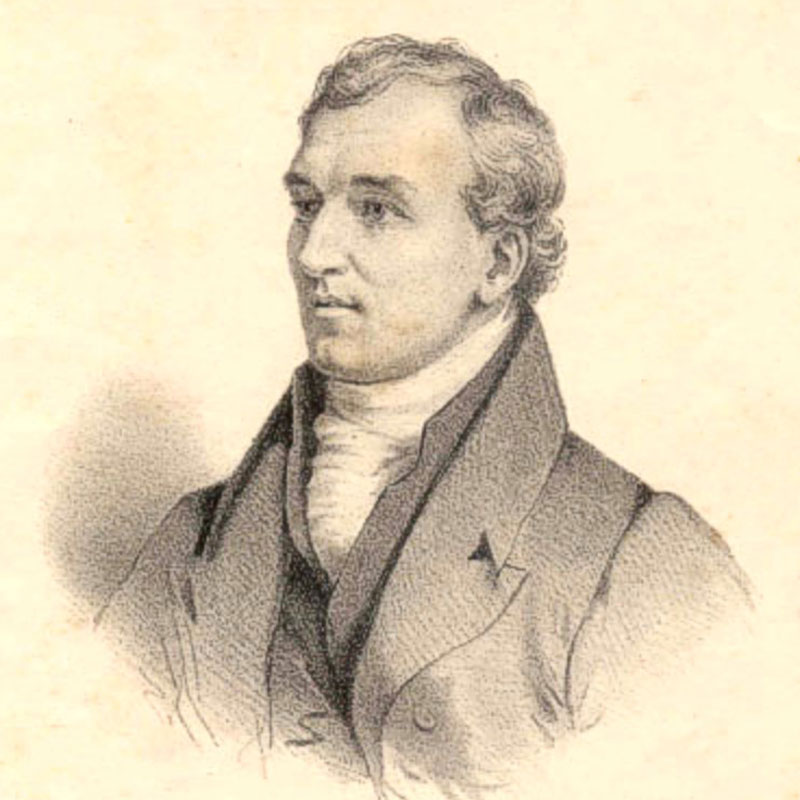
What’s in a Name?
A Hyphenate: Douglas-fir (with a hyphen to indicate it’s a not a true fir) was formally adopted in 1950 by the Seventh International Botanical Congress in Stockholm.
Too Many Names: As late as 1938, the tree had 28 known common names, including Oregon pine, yew-leafed fir, Douglas spruce, false hemlock, red fir, and of course, the unhyphenated Douglas fir.
Namesake: The tree’s common name is in honor of Scottish botanist David Douglas (pictured above), who was sponsored by the Hudson’s Bay Company to collect plants along the Columbia River in the 1820s. He sent to London 120 pounds of Douglas-fir seeds, which were distributed across the United Kingdom—where some remain standing.
Native Names:
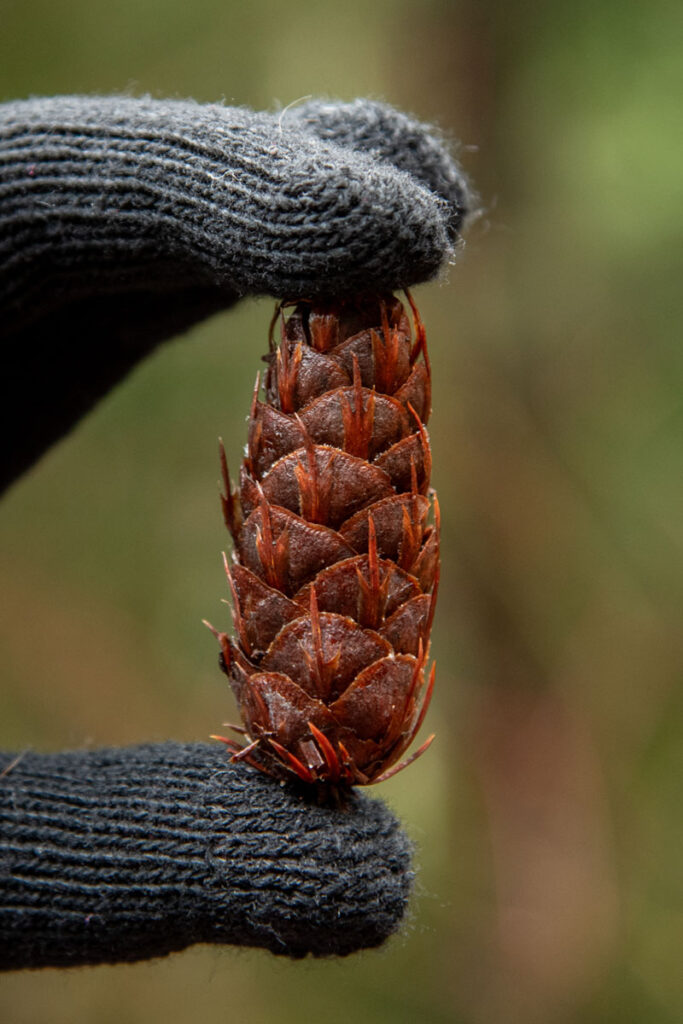
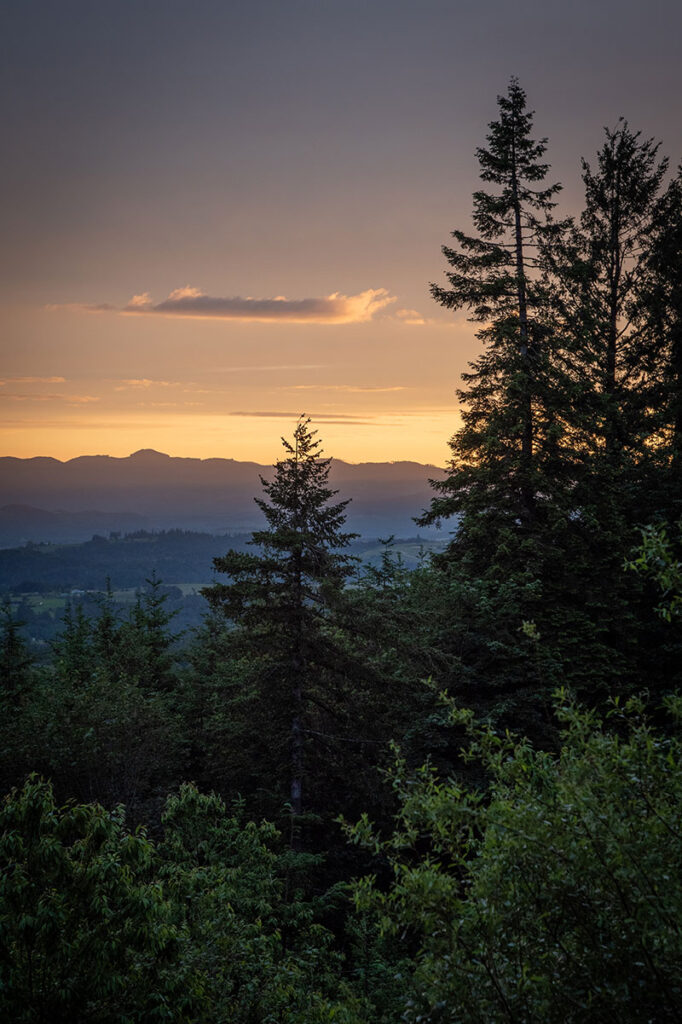
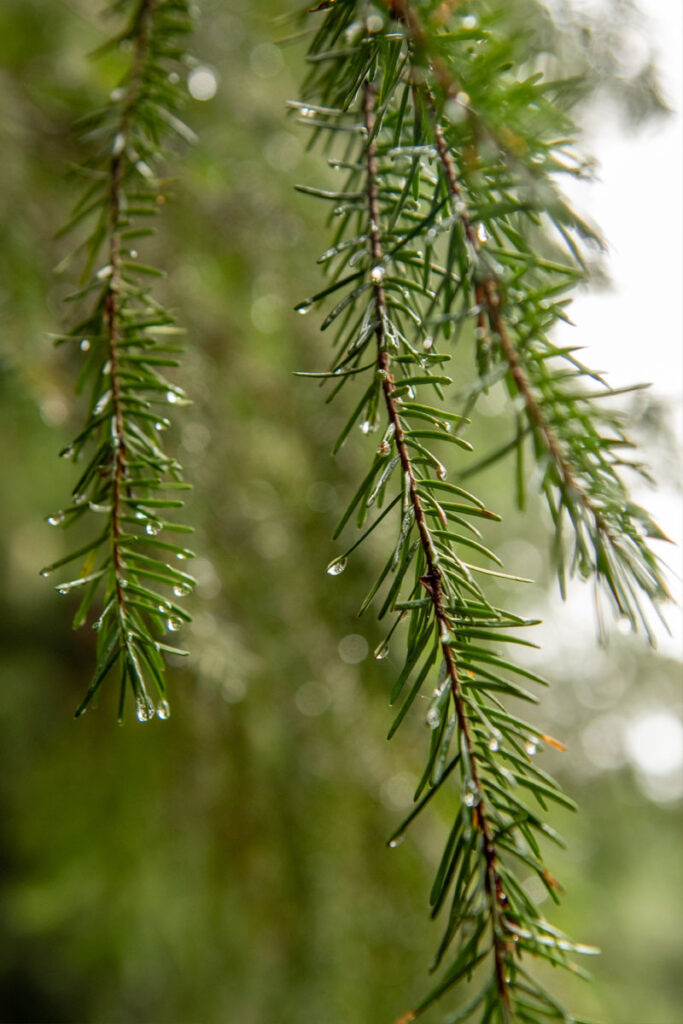
I never used to mind large, public gatherings until the pandemic and reading and watching story after story of mass shootings, wars, political divisiveness, people fighting over everything from parking spots and airplane seats to property lines, and people of color being attacked for doing everyday things. As we walked to Pioneer Square, I walked past a police officer with several guns—was it three or did I make that up?—strapped to his body, and I was jolted out of the excitement of hearing Pink Martini perform and participating in the holiday festivities.
As we found a spot to stand on the street, I looked to my right and noticed the road was barricaded with heavy armored trucks to prevent angry men from driving cars into crowds of people. Five months earlier, I had secured a spot on NE Weidler Street to watch the Grand Floral Parade, part of the annual Portland Rose Festival, with a friend. As I sat watching a young family do hopscotch over freshly drawn, rainbow-colored chalk squares, a man with a lengthy criminal history drove his silver Chevy pickup truck past blockades and sped down the road a few feet in front of me.
Parades and festivals and nightclubs and classrooms don’t feel as safe as they once did, and I wanted to walk the perimeter of the square to better get my bearings. As we turned the second corner, half a block away we saw a man shove another man onto the tracks of the Max train and punched him in the face until a security guard intervened. I didn’t get a good enough look at either of them, but John thought the man being attacked might be homeless.
An online search over the next few days produced no results of the occurrence. What caused the fight? What causes one person to throw another onto asphalt and start punching and keep punching? Or unload rounds of ammo into human bodies? Or turn cars into weapons?
We didn’t stay to watch the tree lighting or hear more festive music. Suddenly, all I could notice was the Black Friday shoppers carrying bags of items past people without homes, and the designated spaces for people who spent enough money to have barriers between themselves and everyone else.
When writing papers in college, I was trained that when a story’s meaning confounded me, I should look deeper into the words.
We left early, and I felt outside of myself. I had wanted to write an article about trees and how to identify one so-named Pseudotsuga meziesii because it confounded botanists. The Douglas-fir is not a true fir or even a spruce, but a fake—or pseudo—hemlock. (According to the National Park Service, its name is hyphenated to indicate its duplicity.)
On the way home, we drove down SW 13th Avenue past a row of tents on one side and St. Stephen’s Episcopal Parish on the other. The latter has a mural of golden wings surrounding a red door and the words: “He will cover you with his feathers and under his wings you will find refuge. (Psalms. 91:4)” I would not call myself religious, but I find the sentiment lovely every time we drive by it.
It reminded me of the story of the tree that provided refuge to the mouse and got me thinking about what it means to provide shelter. When writing papers in college, I was trained that when a story’s meaning confounded me, I should look deeper into the words. Sometimes, their definitions can offer up meaning when the meaning feels lost. The next morning after passing the church, I looked up shelter on Merriam-Webster’s online dictionary. Noun. Something that covers or affords protection. An establishment… A position… Verb. To place… To protect… The Oxford English Dictionary says the earliest known use of the noun was in 1585 by poet John Higgins and was perhaps formed by combining the words shield and jointure. To protect by joining together.
That concept felt so heavy handed and contradictory in college as I read through the writings of America’s early European settlers. I rolled my eyes at Puritan leader John Winthrop’s call to be “knit together in this work [of starting a colony] as one man,” especially after reading in the journals of William Bradford, who was the first governor of Plymouth, about the “vast and unpeopled countries of America” and the “hideous and desolate wilderness, full of wild beasts and wild men.” Winthrop’s sermon, “A Model of Christian Charity,” was delivered in 1630, either before or after fleeing England, religious intolerance, and King Charles I for America. And its image of everyone needing to work together as fingers on a hand has stuck with me for two decades. But so has this: “God Almighty in His most holy and wise providence, hath so disposed of the condition of mankind, as in all times some must be rich, some poor, some high and eminent in power and dignity; others mean and in subjection.”
The sermon has a beautiful message of love and mercy, community and justice, but then and now I couldn’t get past the belief that some are meant to suffer. The idea that some suffer more than others is part of Christianity, Hinduism, Buddhism, and even the poetic Platonic notion of the soul’s thousand-year journey toward light. We do suffer, all of us. But the idea that some do more than others by divine providence has never sat well with me.
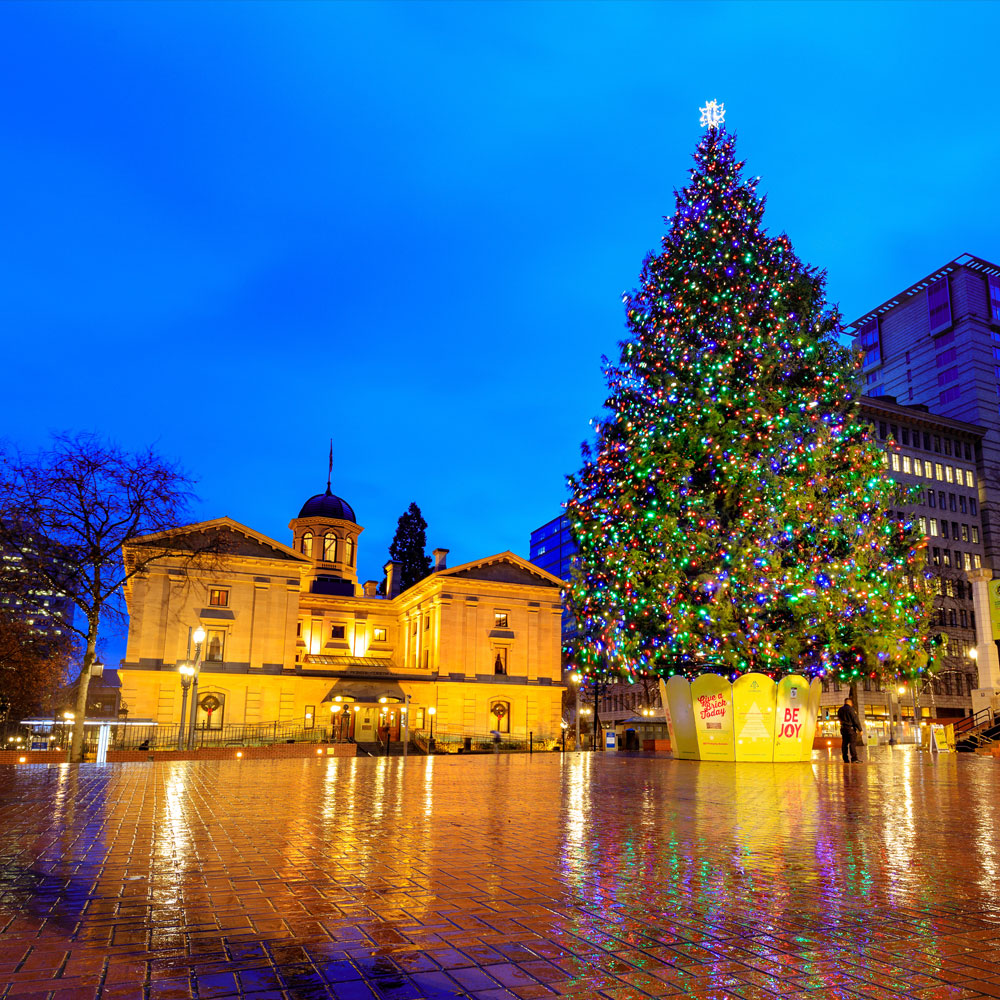
A christmas icon
A World Record: Seattle’s Northgate Shopping Center holds the Guinness World Record for Tallest Christmas Tree. In 1950, they erected and decorated a 221-foot Douglas-fir after nearby Bellingham garnered the international limelight the previous two years for decorating 134- and 153-foot versions of the same tree.
An Annual Tradition: Today, Seattle’s Westlake Center uses an artificial tree, but Pioneer Courthouse Square in Portland (pictured here) still uses the species for its annual tree.
A Popular Conifer: Perhaps all the hoopla is to credit for Douglas-firs being among the most popular species purchased during the holidays—or because they grow rapidly and can replace themselves faster than other species.
Photograph by Yooranpark / Adobe Stock
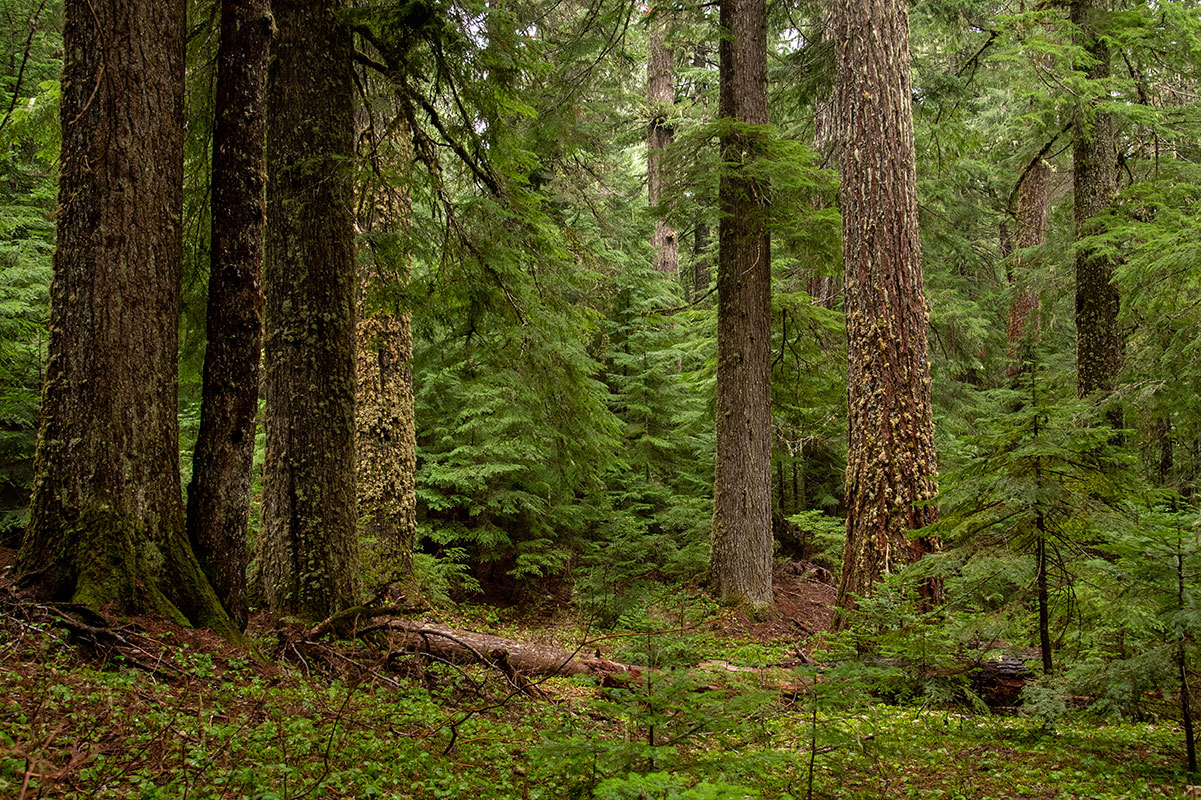
In Portland and while living on the road, I have encountered people living with addiction and mental illness, with and without tents for shelter, in cities and towns and wide-open land. These are complex issues, and I do not pretend to have a viable solution. In cities, we confront them more often because in cities more people are living with them.
As one after another headline and social media post talks about the “Portland problem,” I acknowledge there is one. There is homelessness and crime and open drug use that has made me uncomfortable on more than one occasion. But this isn’t a Portland problem. It’s an American one. Built over decades of dreams of rugged individualism as well as religious and philosophical and political righteousness.
I, like Winthrop, want the solution to be to “abridge ourselves of superfluities, for the supply of other’s necessities. … We must delight in each other, make other’s conditions our own, rejoice together, mourn together, labor and suffer together, always having before our eyes our commission and community in the work, our community as members of the same body.” But even Winthrop meant it only for men like him, white and devout in the preferred form of Christianity (for which they experienced persecution in England). His call to help is better than what I have been doing lately, though, which is merely observing.
This isn’t a Portland problem. It’s an American one.
Even I, admittedly, am not good at engaging in services and acts that benefit more than me. I often feel crushed under the weight of the enormity of large societal issues—houselessness and addiction, yes, but also global conflicts and mass shootings—and have been unable to find a way out of my own introspection.
I do not know how to be like the trees that offered shelter for mice, or even Winthrop who tried to unite people together with hope for a better future. I am, however, slowly learning which trees are Douglas-firs, including a large one outside my window and two small ones on my morning walk.
I have to imagine that more intentional observation and learning to recognize the helpers is one place to start.
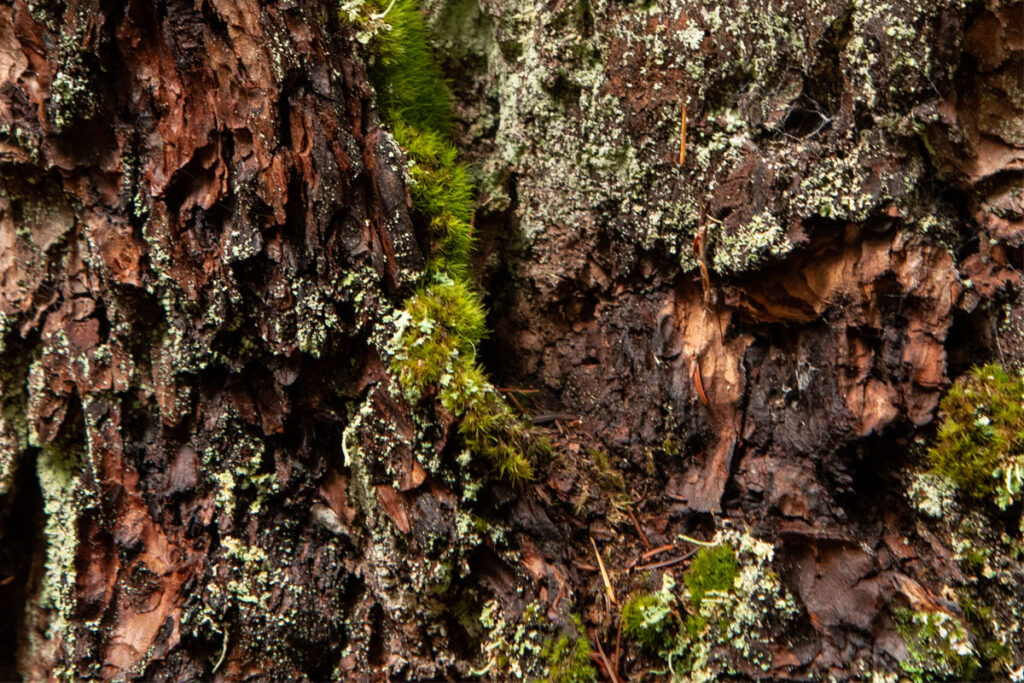

What’s in a Name?
A Hyphenate: Douglas-fir (with a hyphen to indicate it’s a not a true fir) was formally adopted in 1950 by the Seventh International Botanical Congress in Stockholm.
Too Many Names: As late as 1938, the tree had 28 known common names, including Oregon pine, yew-leafed fir, Douglas spruce, false hemlock, red fir, and of course, the unhyphenated Douglas fir.
Namesake: The tree’s common name is in honor of Scottish botanist David Douglas (pictured above), who was sponsored by the Hudson’s Bay Company to collect plants along the Columbia River in the 1820s. He sent to London 120 pounds of Douglas-fir seeds, which were distributed across the United Kingdom—where some remain standing.
Native Names:
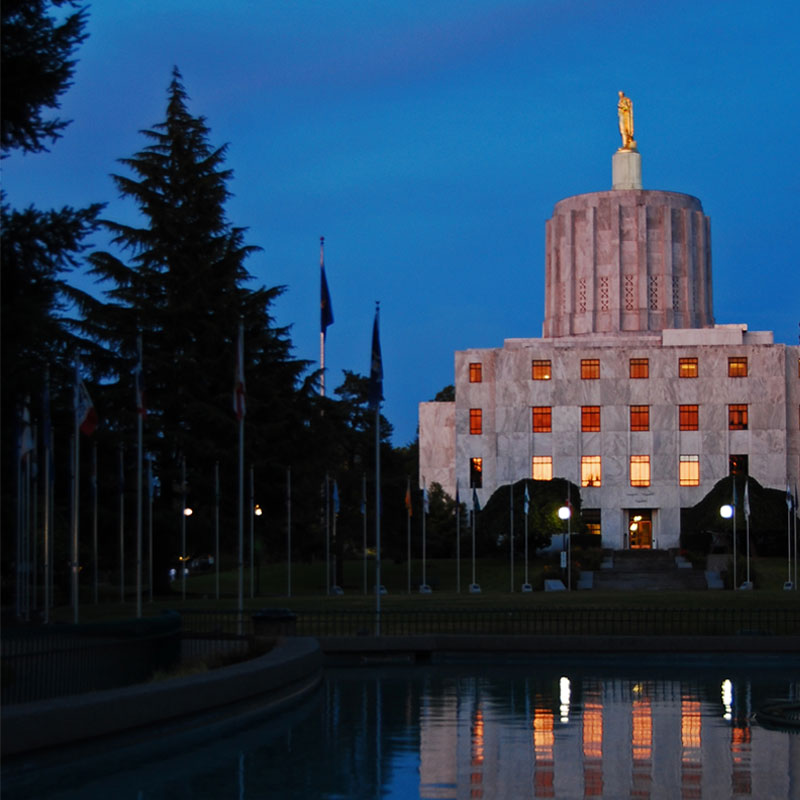
To the moon and back
Collected from Benton County, Oregon, and El Dorado County, California, Douglas-fir tree seeds were aboard the 1971 Apollo 14 mission that went to the moon. When the seeds returned back to earth, they were distributed across the US to celebrate America’s bicentennial, along with fellow space-traveling seeds of the loblolly pine, sycamore, sweetgum, and redwood. Douglas-fir trees from those seeds grow in front of the Capitol Buildings in Salem, Oregon, (pictured here) and Olympia, Washington, among other places.
Photograph by Edmund Garman / Flickr


At Cape Disappointment near the mouth of the Columbia River, Maya Lin’s walkway and boardwalk present juxtaposing journeys of discovery.
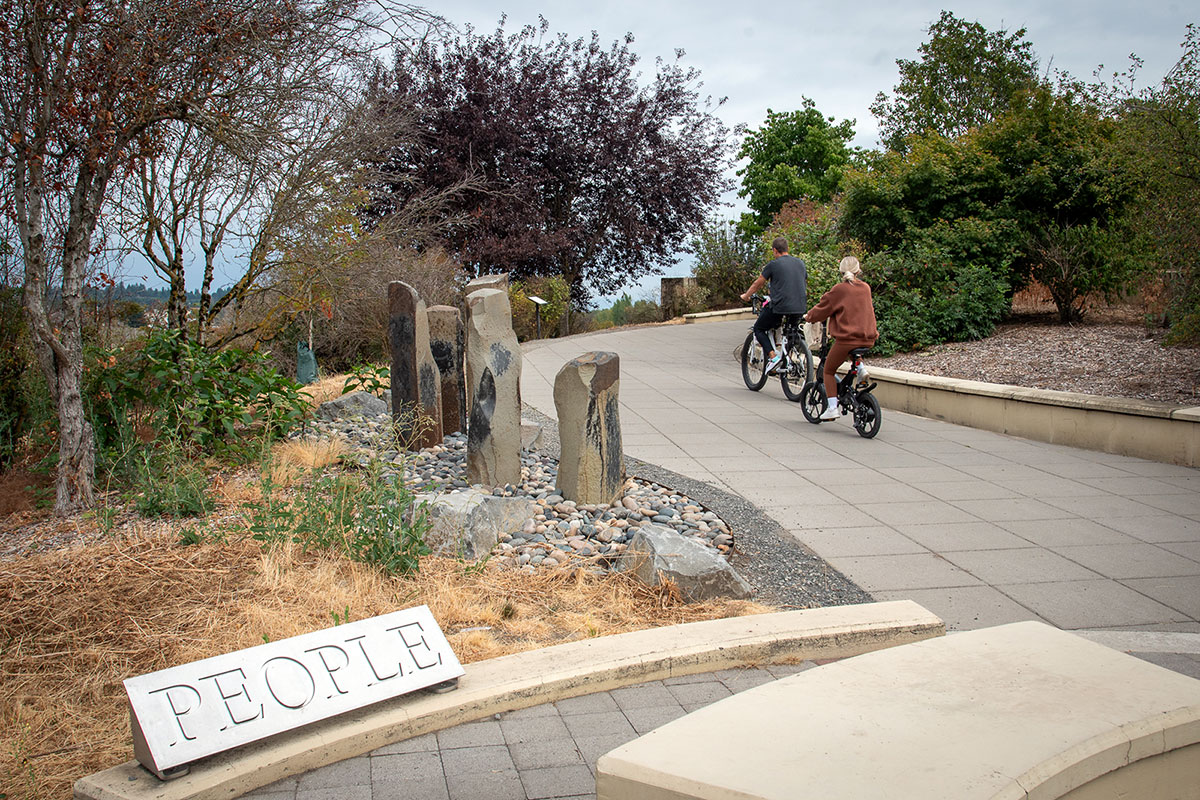
Located near the confluence of the Willamette and Columbia rivers, the Vancouver Land Bridge merges rivers, land, people, and trade.

